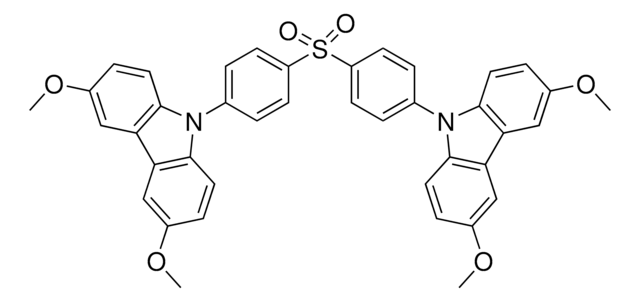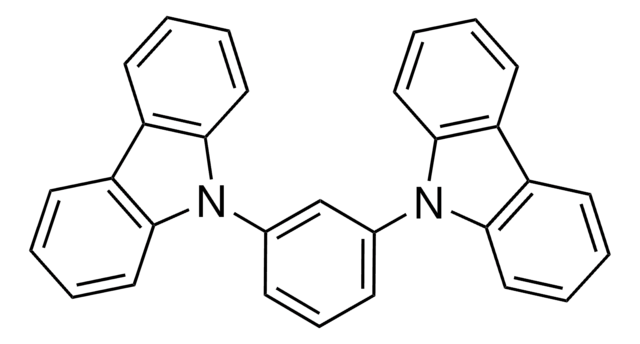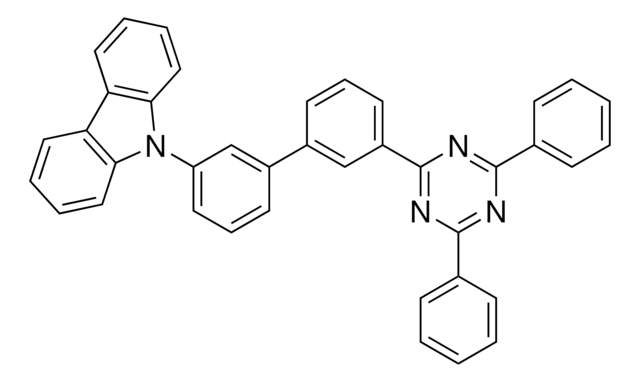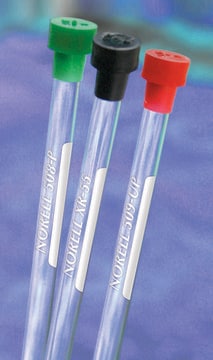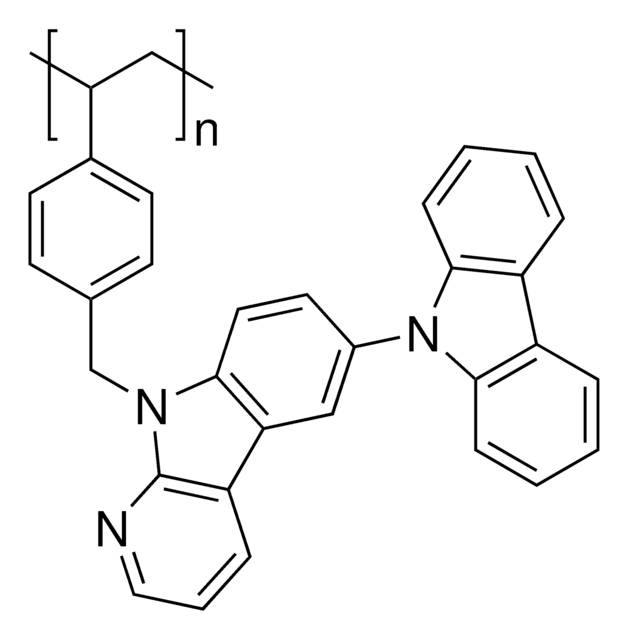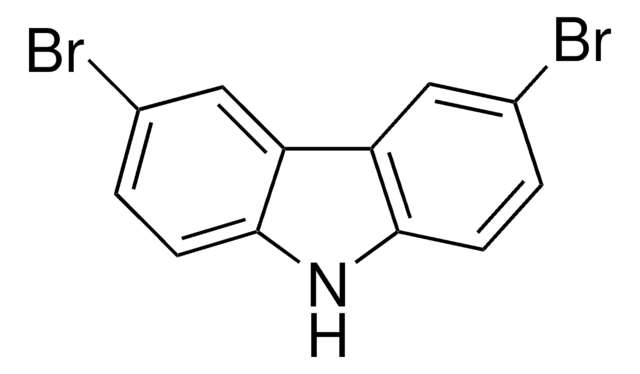932051
2,6-Bis(3-(9H-carbazol-9-yl)phenyl)pyridine
≥99% (HPLC)
Synonym(s):
26DCzPPy
About This Item
dichloromethane: soluble
toluene: soluble
Recommended Products
grade
sublimed grade
Quality Level
description
μh ≈ 1.0 x 10-5 cm2 V−1 s−1
μe ≈ 1.0 x 10-5 cm2 V−1 s−1
Assay
≥99% (HPLC)
loss
0.5% TGA, > 370 °C (weight loss)
solubility
chloroform: soluble
dichloromethane: soluble
toluene: soluble
fluorescence
λem 410 nm±10 nm in dichloromethane
Orbital energy
HOMO 6.05 eV
LUMO 2.56 eV
λ
in dichloromethane
UV absorption
λ: 239 nm±5 nm Amax
λ: 292 nm±5 nm Amax
SMILES string
C1(C2=CC=CC(N3C(C=CC=C4)=C4C5=C3C=CC=C5)=C2)=NC(C6=CC(N7C(C=CC=C8)=C8C9=C7C=CC=C9)=CC=C6)=CC=C1
InChI
1S/C41H27N3/c1-5-22-38-32(16-1)33-17-2-6-23-39(33)43(38)30-14-9-12-28(26-30)36-20-11-21-37(42-36)29-13-10-15-31(27-29)44-40-24-7-3-18-34(40)35-19-4-8-25-41(35)44/h1-27H
InChI key
UFWDOFZYKRDHPB-UHFFFAOYSA-N
Looking for similar products? Visit Product Comparison Guide
Application
Storage Class Code
11 - Combustible Solids
WGK
WGK 3
Flash Point(F)
Not applicable
Flash Point(C)
Not applicable
Regulatory Listings
Regulatory Listings are mainly provided for chemical products. Only limited information can be provided here for non-chemical products. No entry means none of the components are listed. It is the user’s obligation to ensure the safe and legal use of the product.
JAN Code
932051-BULK:
932051-VAR:
932051-250MG:
Choose from one of the most recent versions:
Certificates of Analysis (COA)
Sorry, we don't have COAs for this product available online at this time.
If you need assistance, please contact Customer Support.
Already Own This Product?
Find documentation for the products that you have recently purchased in the Document Library.
Our team of scientists has experience in all areas of research including Life Science, Material Science, Chemical Synthesis, Chromatography, Analytical and many others.
Contact Technical Service
